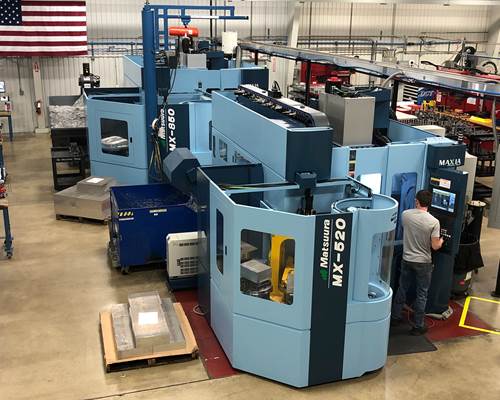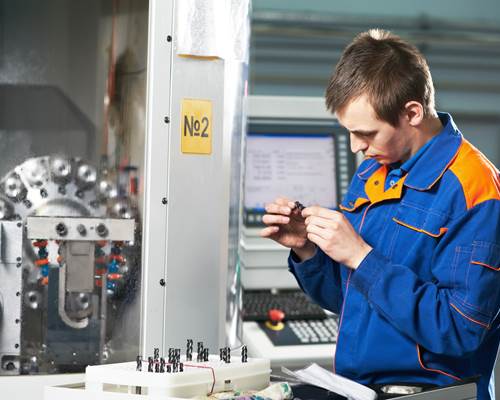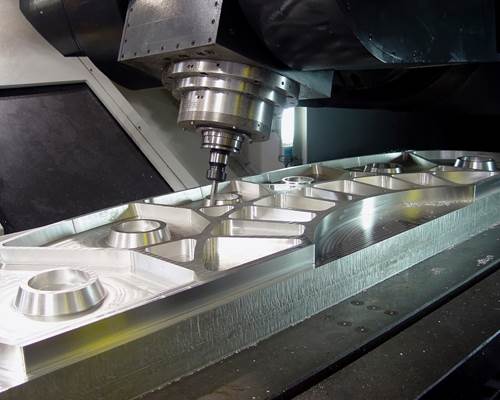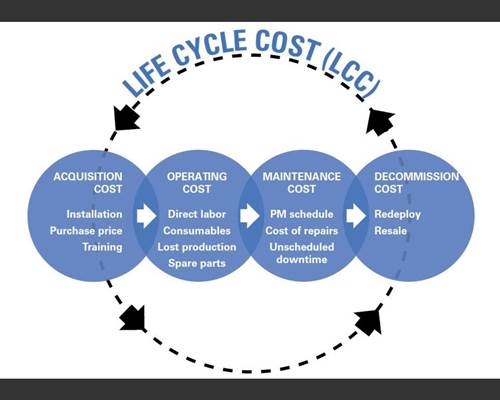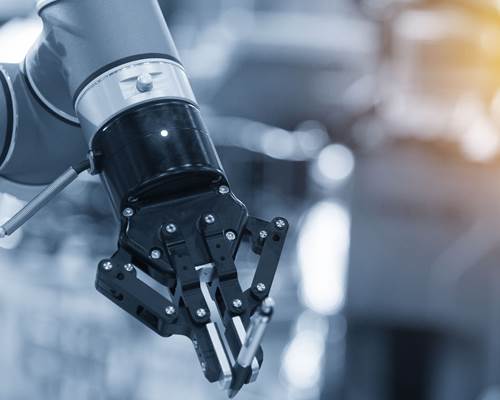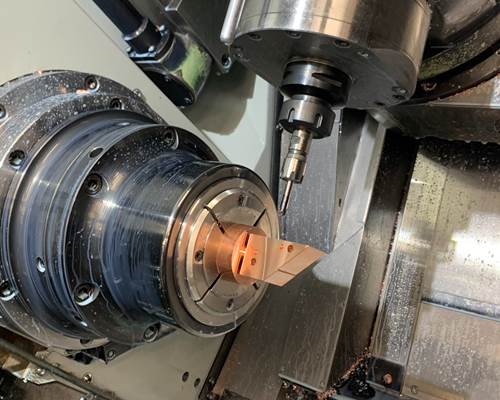Advantages of Five-Axis Machining in Action
The “five” in five-axis machining refers to the number of directions in which the cutting tool can be oriented as it approaches the part surface. This maneuverability provides almost unlimited possibilities for the type and shape of parts one can effectively machine. A significant advantage of five-axis capability is being able to process five sides of a part in a single setup. All sides are accessible except the one resting on the table. For this reason, shops that don’t have full five-axis work involving complex shapes can still benefit greatly from the five-sided machining a five-axis unit allows.
If parts being produced on a three-axis machine must be flipped over or repositioned, producing them on a five-axis machining center in one setup may be more profitable. Most often, the process on a three-axis VMC requires flipping the part, or rolling it around from fixture to fixture, to access all sides the part. Unfortunately, whenever the operator must open the door of a VMC to flip or rotate the part for this purpose, or to load or unload the part, remove chips, or perform in-process quality checks, the spindle must be stopped. This means that a part requiring machining on six sides may have to be moved by the operator seven times (load, reposition five times, unload). Five-sided machining eliminates these extra stoppages.
With five-axis machining, you can grip the part, perform all roughing operations, then go back and finish machining—in essence, gripping the part only one time. This capability enables you to machine part features in the order that is most convenient and may make the most sense for optimum material removal. For example, a part may have neighboring features that chatter or vibrate. These features can be roughed from both sides to reduce the chatter. Being creative with the processing steps is likely to enable you to conquer more challenging features with the added flexibility.
Another advantage to five-sided machining must be mentioned here. If holes on a prismatic part must be located to key features with a tight tolerance, five-sided machining may enable the part to be positioned on the side that requires the least machining, leaving a high percentage of features accessible for processing in a single setup. On a highly accurate machine with five-sided capability, the position of these features will correlate. This is not usually the case when using multiple holding fixtures on a three-axis machine. Machining features in one operation reduces location errors resulting from moving the part.
From a mathematical or statistical process-control standpoint, process capability for, let’s say, 30 parts produced on a five-axis machine versus on a conventional machine will be higher on the five-axis machine by eliminating the human involvement required for part repositioning. Even on the most finely tuned conventional machine, slight error is introduced whenever parts are handled by the operator. Using five axes to complete a part in one cycle with little or no operator intervention avoids this source of error.
Having said all this, you might be surprised to learn that a five-axis machine is never quite as robust as a three-axis machine. In addition to X, Y and Z axes, the rotary tables or trunnion add more mechanical joints susceptible to flex and wear. Do not let this concern you. Most shops will use 3+2 positioning for the roughing cycle and then use full five-axis machining to finish. Position, then hog, position, then hog, then use five-axis machining to finish the part gracefully.
Machining molds on a three-axis machine has its own challenges and limitations. For deep-pocket molds or tall-core molds, the required tools tend to be longer and smaller in diameter. Feed rates must be slowed to minimize tool chatter and prevent breakage. In contrast, with full five-axis machining, you can use shorter, stouter tools; have better access to the surface without Z-axis interference; take heavier cuts; increase feed rates; remove more material faster; and achieve better surface finishes, all while requiring fewer setups and shorter machining times. The incremental increase in costs for a five-axis machine compared to a three-axis machine will generally be absorbed quickly through increased efficiency.
